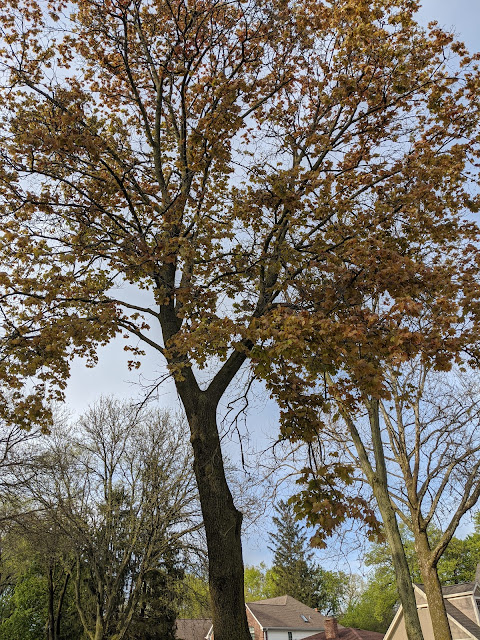Frost Damage - Front Yard Hostas

A couple of weeks ago, I posted some photos of our Ostrich Ferns that had suffered some late-season frost damage . On a walk around our yard recently, I noticed some strange signs on our front-yard hostas. You can see one of them above with the whitish tips on parts of this hosta that showed up after that frost event. The hosta above is the 'middle' one of three up there. Below is a photo showing all three - in front of the tulips. This one (below) is the northern-most one on the right: And this one (below) is the southern-most one that has the least amount of frost damage. This area can use a few more hostas to fill in - as I think the heavy clay soil in this bed has limited the growth/spread of anything that we've planted in here.





